Accelerometer Sensor
3 Axis Digital Accelerometer Sensor, RS232/RS485/TTL
3 Axis Accelerometer Sensor for Vibration, 4-20mA Output
3 Axis MEMS Accelerometer Sensor, 0~5V Output
Miniature Capacitive Accelerometer Sensor, Single Axis
Micro Capacitive Accelerometer Sensor, 3 Axis, ±1g~±50g
Piezo Accelerometer Sensor, 50-5g, 100-50g
Piezo Accelerometer Sensor, 0-200g, 0-500g, 0-1000g
IEPE/ICP Accelerometer Sensor for Vibration Measurement
Industrial Accelerometer Sensor with Piezoelectric, ±50g
PE Accelerometer Sensor, 150g, 1500m/s2
Accelerometer Vibration Sensor, 0-20mm/s, 0-50mm/s, 10g
Dynamic Signal Analyzer for IEPE/PE Accelerometer Sensor, 1 Channel
IC Piezoelectric Accelerometer Sensor, 24V DC, 10g
Triaxial Axis Accelerometer and Vibration Sensor, ±16g, 0–50 mm/s
As a core component of modern measurement technology, accelerometer sensors capture changes in the motion of objects and provide key data support for industrial control, consumer electronics, aerospace, and other fields. Their accuracy and reliability have become the cornerstone of intelligent development. When selecting a sensor, the test environment, frequency range, installation method, and signal processing requirements should be taken into consideration. SUCH.com provides a variety of high-performance accelerometer sensor solutions, covering different models from industrial to scientific research levels, and supports customized services to meet the measurement needs of users under special conditions such as high temperature, low frequency, and high impact.
Working Principle
The working principle of an accelerometer sensor is to convert changes in the acceleration of an object into a measurable electrical signal. Its core structure usually consists of a mass block, an elastic element, and a sensitive element. When the object being measured undergoes a change in acceleration, the internal mass block will be displaced due to inertia, generating stress through the elastic element. This mechanical change is sensed by the sensitive element and converted into an electrical signal. It mainly relies on the following principles:
Piezoelectric Effect: Certain crystal materials (such as quartz and PZT piezoelectric ceramics) generate an electric charge proportional to the amount of deformation when subjected to force. Piezoelectric and charge-type accelerometer sensors utilize this principle to convert the inertial force of the mass block caused by acceleration into force on the piezoelectric element, which then outputs an electrical signal. This technology is suitable for high-frequency and high-temperature applications. This technology has a fast response and wide frequency band and is widely used in industrial vibration monitoring (such as IEPE accelerometer sensors).
Strain Effect: When a material is deformed, its resistance changes. Strain-type accelerometer sensors use strain gauges to detect the minute deformation of elastic elements under the action of acceleration, convert it into a change in resistance, and then output an electrical signal through a bridge and amplification circuit. They are often used in low-frequency, high-impact testing.
Capacitance Change: The principle of capacitance change is often used in MEMS accelerometer sensors. It relies on changes in the capacitance value caused by changes in the electrode spacing due to the displacement of the mass block, which is then converted into an acceleration signal through a circuit. It has the characteristics of small size, low power consumption, and easy integration.
Inertial Force Principle: The inertial force principle is the foundation of all acceleration sensors. When an object accelerates, the internal mass block undergoes relative displacement due to inertia, driving the sensitive element to generate a measurable signal, thereby achieving acceleration measurement.
Classification and Characteristics
| Type | Features and Performance | Typical Products/Application Scenarios |
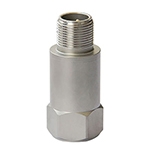 Piezo accelerometer sensor Piezo accelerometer sensor |
Wide frequency response range, high temperature resistance, electromagnetic interference resistance | Industrial equipment vibration monitoring, aerospace vibration and shock testing |
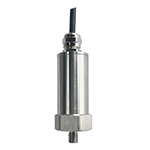 Accelerometer vibration sensor Accelerometer vibration sensor |
Simple structure, high reliability, suitable for low frequency vibration measurement | Building vibration monitoring, bridge structural health monitoring |
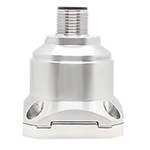 MEMS accelerometer sensor MEMS accelerometer sensor |
Small size, low power consumption | Smartphones, drone attitude control, wearable devices, game controllers |
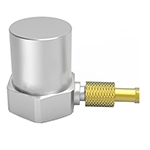 PE accelerometer sensor PE accelerometer sensor |
High sensitivity, good linearity, can operate at extremely high or low temperatures, requires external charge amplifier | Engine vibration testing, turbomachinery monitoring, high-temperature industrial environment vibration measurement |
Application Areas of Accelerometer Sensors
Accelerometer sensors can detect changes in acceleration and are widely used in various measurement scenarios. By detecting acceleration signals, they provide critical data support for numerous fields. Accelerometer sensors have a wide range of measurement ranges. For example, SUCH three-axis digital accelerometer sensors have outputs of ±2g, ±8g, ±10g, etc.
Accelerometer sensors are highly accurate and can accurately measure minute changes in acceleration. In medical equipment, they can be used to monitor the acceleration of a patient's physical activity. Some vibration testing equipment uses accelerometer sensors to analyze the characteristics of vibrations. They have a fast response time and can capture instantaneous changes in acceleration in a timely manner.
In sports equipment, they can help athletes analyze the acceleration data of their movements. In smart home systems, they can be used to determine the opening and closing of doors and windows based on acceleration. Accelerometer sensors have low power consumption and are suitable for long-term continuous operation. In the field of navigation, they can help ships maintain a stable sailing attitude. When drones are flying, they can assist the aircraft in making precise attitude adjustments and achieve smooth flight control with the help of accelerometer sensors. They can adapt to different temperature environments and ensure stable performance.

Sports Equipment

Smart Home Systems
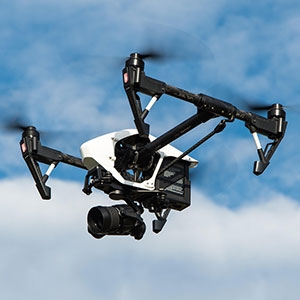
Drones
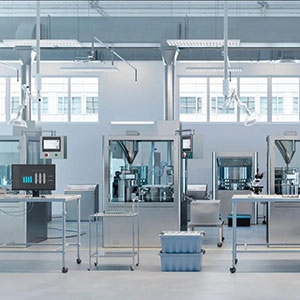
Medical Devices
Accelerometer sensors are undergoing a transition from single-function to high-precision, miniaturized, and multi-functional integration. In industrial scenarios, piezoelectric and force balance types ensure reliability in extreme environments. In the consumer sector, MEMS technology is driving innovation in mobile devices, and in the medical and health sector, personalized monitoring devices are gradually becoming popular. In the future, with the optimization of anti-interference algorithms and the maturity of wireless sensor networks, accelerometer sensors will play a more central role in the Internet of Things, human-machine interaction, and intelligent systems. Whether it is equipment fault diagnosis, modal analysis, or intelligent control systems, SUCH sensors can provide accurate and stable data support for your projects.
















































